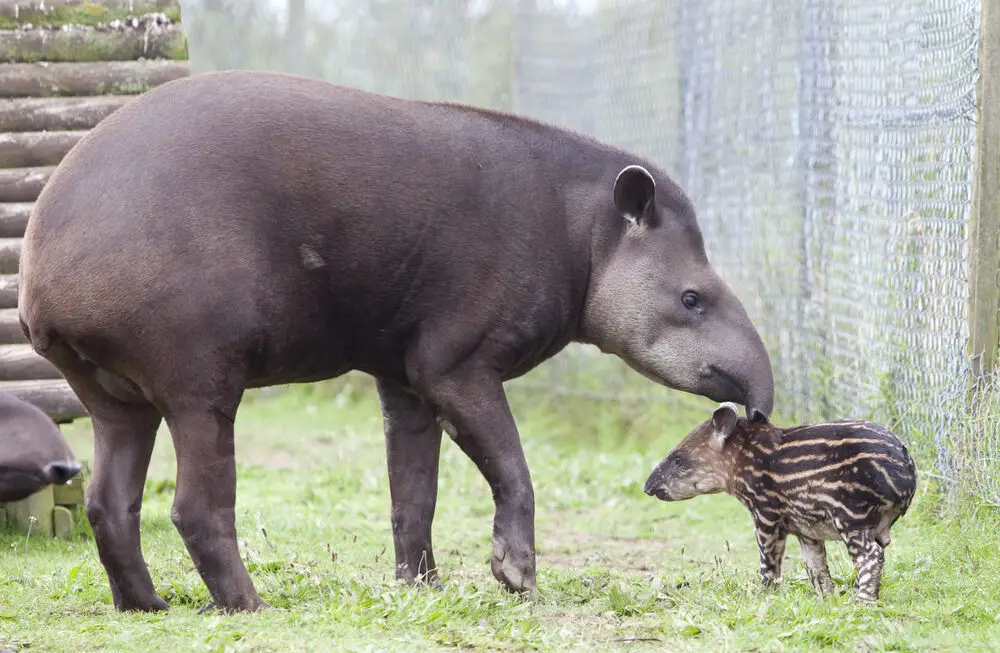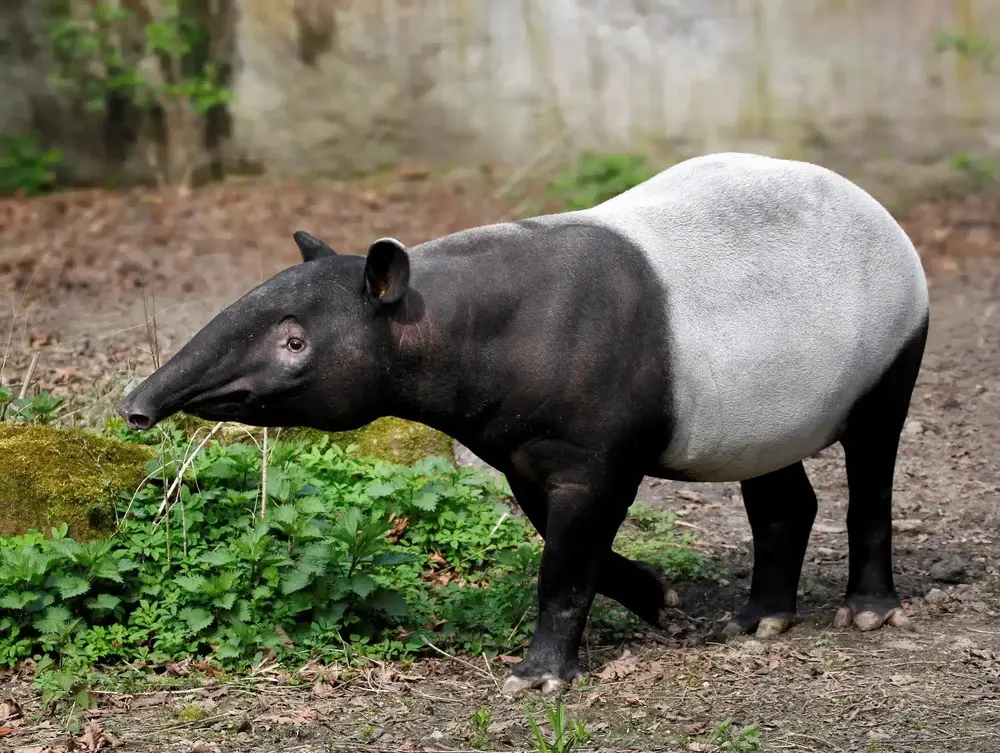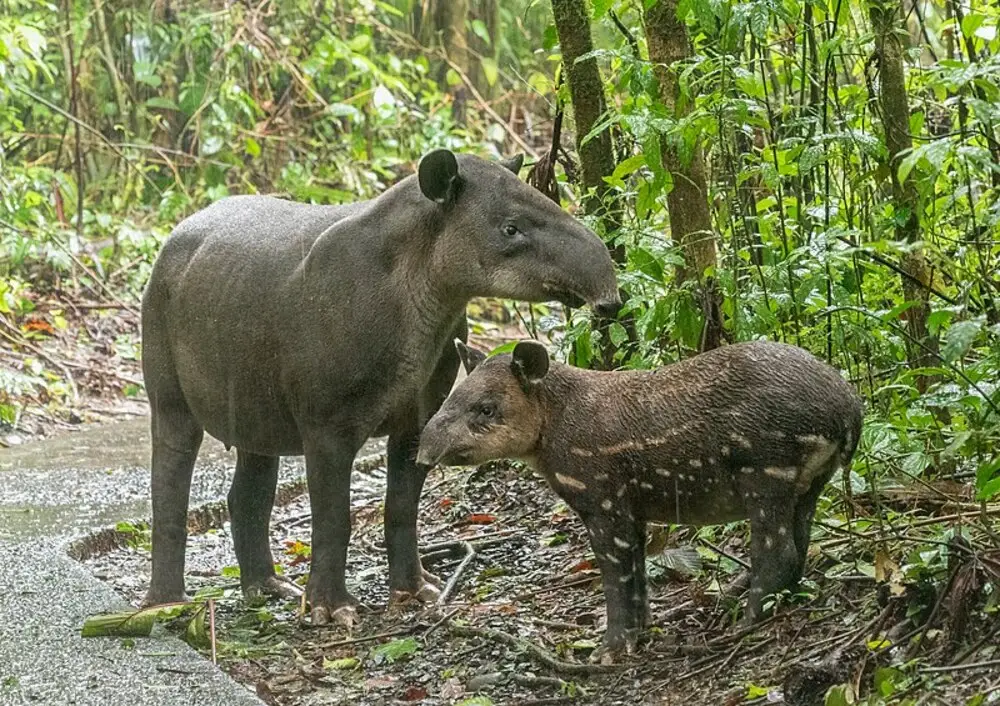Tapirus
IUCN
VUBasic Information
Scientific classification
- name:Tapirus
- Scientific Name:
- Outline:Ungulata
- Family:Perissodactyla Tapiridae
Vital signs
- length:Tapiridae,Acrocodia
- Weight:1.8-2.5m
- lifetime:110-400kg
Feature
It is shaped like a donkey, with a short tail, a mane all over its body, small eyes, oval ears, four toes on the front feet, and three toes on the back feet.
Distribution and Habitat
Tapirs live mainly in tropical rainforests and prefer areas with permanent water sources and lush trees and grass. In addition, they can adapt to dry deciduous mountain forest environments. The habitat of the Malay tapir ranges from sea level to 2,000 meters above sea level in tropical rainforests, low mountain forests, and regenerated and secondary forests. The South American tapir mainly inhabits tropical lowland rainforests and wetlands from sea level to 4,500 meters above sea level, but they can also be found in seasonally dry areas such as Bolivia and Paraguay. The Central American tapir lives in tropical rainforests, low mountain forests, deciduous forests, and flooded grasslands and swamps from sea level to 3,600 meters. The mountain tapir mainly inhabits mountain forests between 2,000 and 4,000 meters above sea level and cloud forests that are often covered by clouds. The Kabomani tapir mainly lives in places where forests and savannahs are intertwined.
Appearance
Tapirs are donkey-like in shape, with a very short tail. Their bodies are round at the back and thin at the front, and are covered with bristles, which enables them to move quickly through dense undergrowth. Their eyes are small, located on the side of the head, and are red in color. Their ears are oval, erect, and not very flexible. Tapirs have four toes on their front feet and three toes on their hind feet. One of the most obvious features of tapirs is that their upper lip and nose extend into a short, protruding trunk. In addition, the nasal bones at the front of the tapir's skull are short and protrude forward. The dental structure of tapirs is similar to that of equids, with tooth formulas I3/3, C1/1, P4/4, and M3/3, with a total of 42 to 44 teeth, of which the incisors are chisel-shaped and the canines are conical.
Details
Tapir is the name of the genus Tapir (scientific name: Tapirus), a genus of the family Tapiridae in the order Perissodactyla. It is collectively called tapir, also written as 獏, and is a large forest-dwelling herbivorous mammal. There are four existing species, namely the mountain tapir, the South American tapir, the Central American tapir, and the Malay tapir. The first three are all native to the Americas, and only the Malay tapir is native to Southeast Asia. In addition, there is another species named in 2013, the Kabomani tapir, which is distributed in South America and was once regarded as the fifth existing tapir, but its independent species status has been widely controversial. Later genetic studies have shown that the Kabomani tapir is actually part of the South American tapir, not a valid species. Traditionally, all living tapirs are classified as Tapir (Tapirus), but some scholars have placed the Malay tapir in a separate genus (Acrocodia).
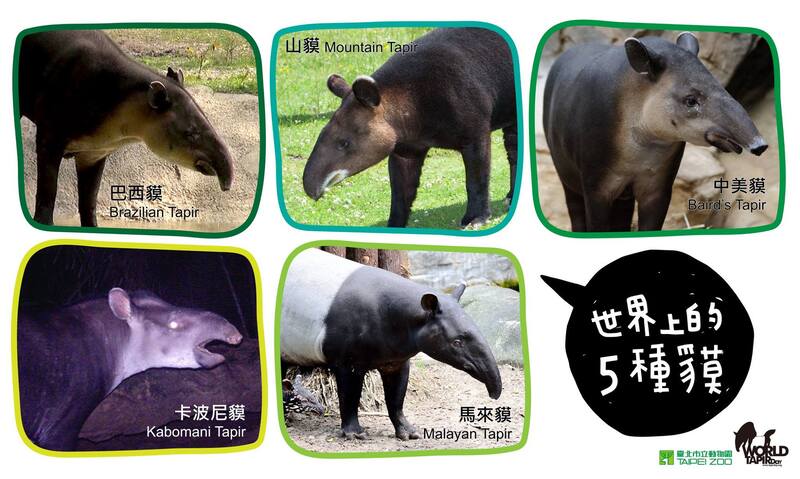
The Tapir family is mainly distributed in the Americas and Southeast Asia. They mainly live in tropical rainforests and prefer places with permanent water sources and lush trees and grass. They can also adapt to dry deciduous mountain forest environments. Tapirs are mainly nocturnal, resting during the day and foraging at night. They communicate through their noses, express emotions or find sexual partners. Tapirs usually live alone, but appear in pairs during the mating season; they are herbivores, and their food includes terrestrial and aquatic plants. Malayan tapirs eat 4% to 5% of their body weight every day and crave salt.
As of 2024, according to the "Red List of Threatened Species of the World Conservation Union (IUCN)", there are 4 species of this family listed, of which 3 are rated as endangered (EN) and 1 is vulnerable (VU). Tapirs play an important role in the ecosystem: they promote biodiversity by spreading seeds; the Central American tapir is an important indicator species of the ecological status of tropical rainforests; tapirs break branches and knock down tree trunks, thereby providing more food for smaller herbivores. In terms of culture, the Tang Dynasty poet Bai Juyi once wrote "Tapir Screen Praise" to praise tapirs, and ancient artifacts such as the "Tapir Zun" also reflect the image of tapirs. In Japanese culture, tapirs are regarded as "dream-eating tapirs" that can swallow nightmares.
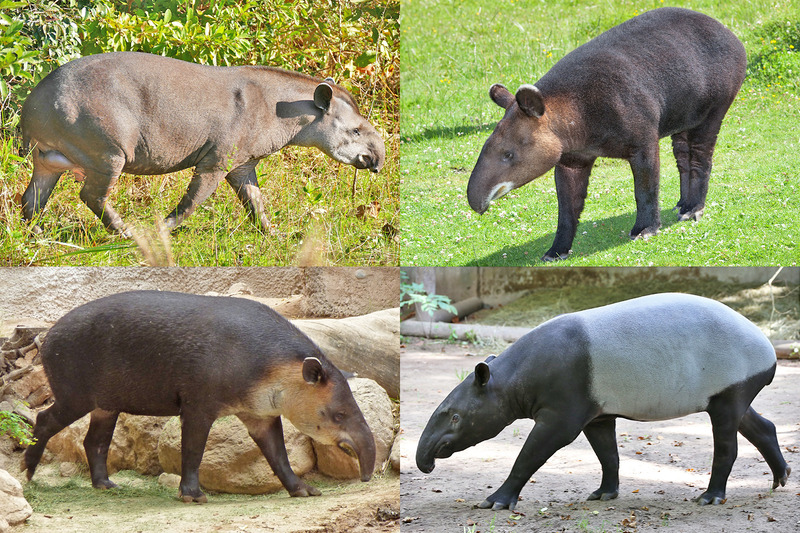
Tapirs live in lowland to mountain forests near water sources, live alone without a fixed territory, and are good at swimming and diving. They have a fat body, short limbs, and a very short tail. They are pig-like but slightly larger. They are the largest native mammals in South America. They retain the original characteristics of odd-toed ungulates with four toes on the forelimbs and three toes on the hind limbs, and the toes have hoofs; their most notable feature is that they have a protruding nose that can be used to grasp leaves to assist in eating and can act as a breathing tube when swimming.
Tapirs originated in North America during the Oligocene. The animals with the closest living relatives are rhinoceroses and horses, and they are particularly close to rhinoceroses. The two and their prehistoric relatives together form the suborder of horned ungulates under the order Perissodactylus.
In a 2013 paper describing the Kabomani tapir, researchers analyzed the mitochondrial cytochrome b gene sequence of living tapirs and pointed out that among the three modern South American tapirs, the South American tapir, the mountain tapir and the Kabomani tapir, the Kabomani tapir was the first to differentiate, while the mountain tapir was nested within the South American tapir. If the mountain tapir is removed from the South American tapir as an independent species, the South American tapir will become a paraphyletic group. At the same time, molecular dating methods determined that the Kabomani tapir diverged from the evolutionary branch consisting of South American tapirs and mountain tapirs 652,000–288,000 years ago, the Central American tapir diverged from three South American tapir species 7.55 million–3.16 million years ago, and the Malayan tapir diverged from all other living tapirs 12.7 million–5.6 million years ago.
FAQ
1. What Kind of Animal is a Tapir?
Answer: A tapir is a large herbivorous mammal that looks like a cross between a pig and an elephant due to its distinctive, flexible snout. Tapirs mainly live in tropical rainforests of Central and South America, as well as Southeast Asia. They are primarily plant-eaters, feeding on leaves, fruits, and tender branches. There are four main species of tapirs: the Malayan tapir, the Baird’s tapir, the mountain tapir, and the Brazilian tapir.
2. What is the Purpose of a Tapir’s Long Snout?
Answer: A tapir’s long snout is highly flexible and functions as an essential tool. Tapirs use their snout to grab leaves and fruits, sniff their surroundings for food, and detect potential threats. It also helps them locate water sources and navigate dense vegetation.
3. Are Tapirs Gentle Animals?
Answer: Yes, tapirs are generally gentle and shy animals. When faced with danger, they prefer to flee rather than fight. However, if they feel cornered or are protecting their young, they can become defensive and use their strong jaws and sharp teeth to ward off predators.
4. Are Tapirs Endangered?
Answer: Yes, all species of tapirs are classified as endangered or vulnerable. Habitat destruction due to deforestation, illegal hunting, and agricultural expansion have contributed to the decline in tapir populations. The Malayan and Baird’s tapirs are particularly at risk, requiring urgent conservation efforts to prevent extinction.
5. What is the Cultural Symbolism of Tapirs?
Answer: In East Asian culture, the tapir is often considered a mythical creature known as the "dream eater" or "Baku," believed to devour nightmares and symbolize peace and tranquility. In Latin American regions, tapirs are seen as the "guardians of the forest" due to their important role in spreading seeds and maintaining the ecological balance of their habitats.


